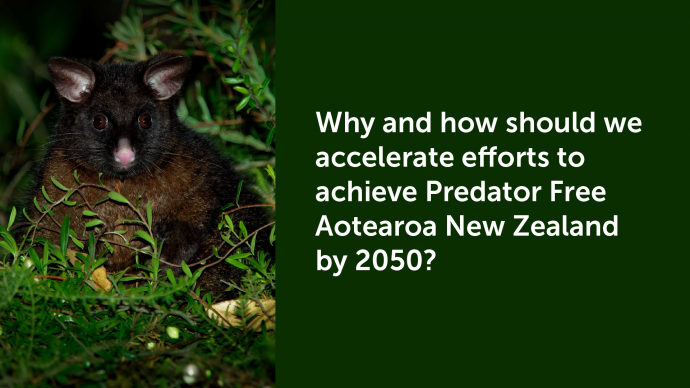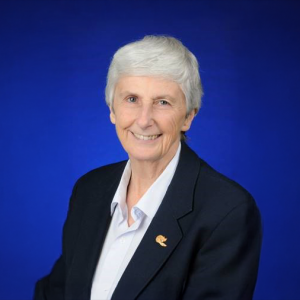Expert perspective: Emeritus Professor Carolyn (Kim) King FRSNZ

Emeritus Professor Carolyn (Kim) King FRSNZ, zoologist and author, highlights the need to prevent species extinction now while developing new technologies:
"Predator Free New Zealand 2050 is the latest incarnation of decades of effort to protect indigenous fauna from invasive predators. It is an ambitious programme, launched in 2016, with much fanfare and significant Government support. Its stated goal is the total eradication of all alien predatory species of rats, mustelids and possums from throughout New Zealand by 2050.
We should accelerate efforts to achieve this goal because the most deeply endemic members of our indigenous terrestrial fauna are in crisis. They evolved in a remote forested environment free of all four-footed land mammals, including humans. Natural selection in the pre-human past favoured slow growth, minimal mortality rates and long lifetimes. Since the arrival of Polynesian, then European settlers and their companion animals, there has been an unprecedented acceleration in habitat destruction and mortality rates imposed by alien predators. The combined effects of these drastic changes have favoured the opposite set of characteristics – rapid-growth, breed-fast, and die-young – a strategy to which our most precious native species simply could not adapt.
Predator Free 2050 should be pursued because if we don’t make every effort to preserve what remains of our endangered species now, there will be nothing left to protect by 2050.
Predator Free 2050 aims to salvage what is left of the battered remains of our biodiversity from ongoing losses for which their evolutionary heritage has not prepared them.
Locally and temporarily, we are on the right track. We have developed many very effective methods of habitat restoration and removing predators, with widely celebrated results. Local community volunteers have been galvanised by the vision of Predator Free 2050, and they can achieve ongoing suppression of predator populations, supplemented by limited official operations involving toxins spread by helicopters. But at increasing landscape scale, the inevitable reinvasions make the stated national aim progressively more unachievable, except on offshore islands or behind fences.
We will not achieve the Predator Free 2050 goal with the tools we have available now, but we must continue to use them until we think of something better. The compromise strategy can be conceived as a game of two halves. (1) In the short term we must prevent otherwise inevitable extinctions among remnant populations that have survived since pre-human times. (2) In the longer term we need to develop new technology that will enable us to achieve Predator Free 2050’s goal at national scale. By (1), we are hanging on to what is left of our past; by (2) we are hanging on to our future, because providing for the restoration of habitats and food security will in time swell the dawn chorus. "
Published May 2025
 Emeritus Professor Carolyn M King FRSNZ is a zoologist who has specialised in invasive mammals. Her PhD at the University of Oxford focused on weasels. Since 1971 she has worked in New Zealand, where her research on stoats and rodents has informed strategies for managing predators. She has made breakthroughs in understanding stoat population dynamics, particularly explosive growth after beech masts, and their potential for invasions of offshore islands.
Emeritus Professor Carolyn M King FRSNZ is a zoologist who has specialised in invasive mammals. Her PhD at the University of Oxford focused on weasels. Since 1971 she has worked in New Zealand, where her research on stoats and rodents has informed strategies for managing predators. She has made breakthroughs in understanding stoat population dynamics, particularly explosive growth after beech masts, and their potential for invasions of offshore islands.
